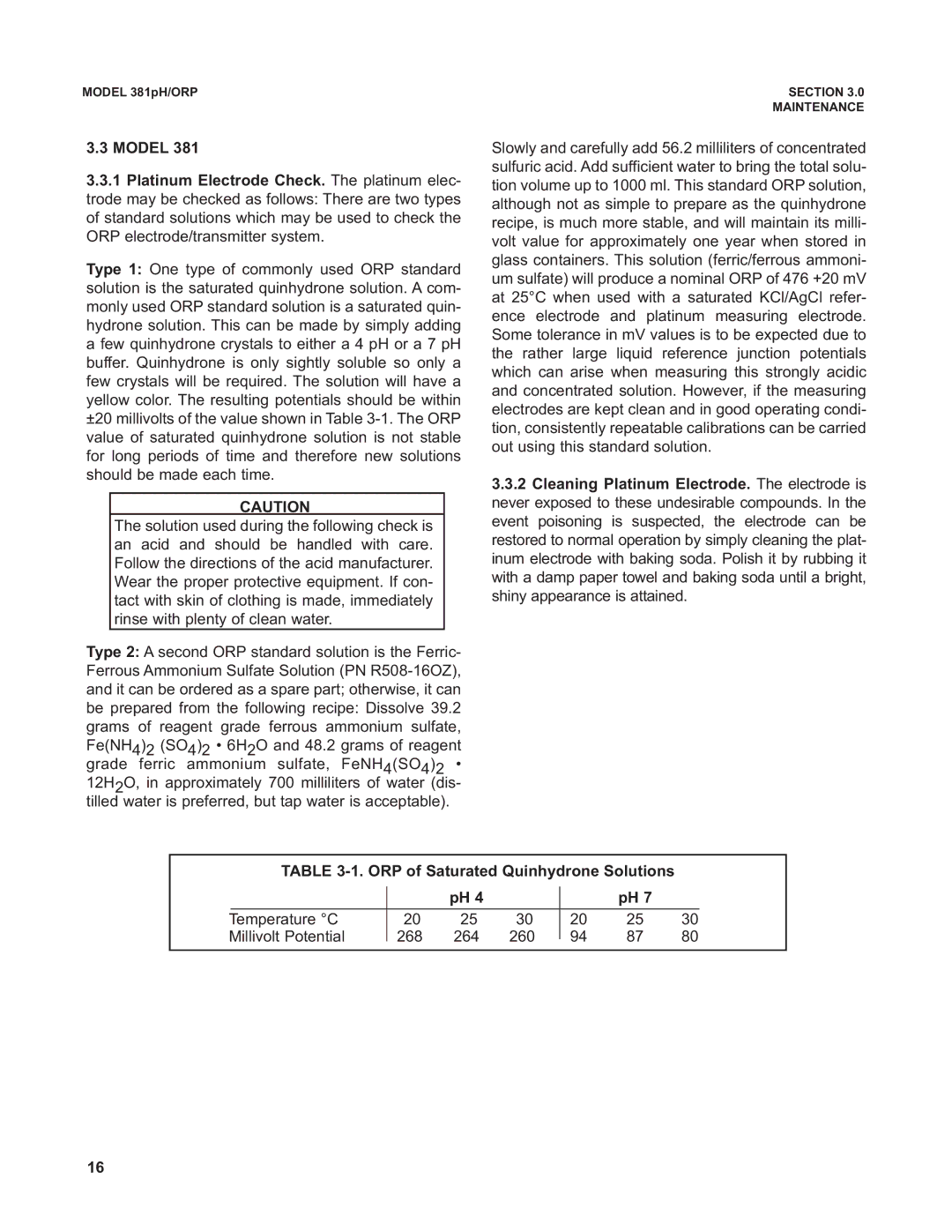
MODEL 381pH/ORP | SECTION 3.0 |
| MAINTENANCE |
3.3 MODEL 381
3.3.1Platinum Electrode Check. The platinum elec- trode may be checked as follows: There are two types of standard solutions which may be used to check the ORP electrode/transmitter system.
Type 1: One type of commonly used ORP standard solution is the saturated quinhydrone solution. A com- monly used ORP standard solution is a saturated quin- hydrone solution. This can be made by simply adding a few quinhydrone crystals to either a 4 pH or a 7 pH buffer. Quinhydrone is only sightly soluble so only a few crystals will be required. The solution will have a yellow color. The resulting potentials should be within ±20 millivolts of the value shown in Table
CAUTION
The solution used during the following check is an acid and should be handled with care. Follow the directions of the acid manufacturer. Wear the proper protective equipment. If con- tact with skin of clothing is made, immediately rinse with plenty of clean water.
Type 2: A second ORP standard solution is the Ferric- Ferrous Ammonium Sulfate Solution (PN
Slowly and carefully add 56.2 milliliters of concentrated sulfuric acid. Add sufficient water to bring the total solu- tion volume up to 1000 ml. This standard ORP solution, although not as simple to prepare as the quinhydrone recipe, is much more stable, and will maintain its milli- volt value for approximately one year when stored in glass containers. This solution (ferric/ferrous ammoni- um sulfate) will produce a nominal ORP of 476 +20 mV at 25°C when used with a saturated KCl/AgCl refer- ence electrode and platinum measuring electrode. Some tolerance in mV values is to be expected due to the rather large liquid reference junction potentials which can arise when measuring this strongly acidic and concentrated solution. However, if the measuring electrodes are kept clean and in good operating condi- tion, consistently repeatable calibrations can be carried out using this standard solution.
3.3.2Cleaning Platinum Electrode. The electrode is never exposed to these undesirable compounds. In the event poisoning is suspected, the electrode can be restored to normal operation by simply cleaning the plat- inum electrode with baking soda. Polish it by rubbing it with a damp paper towel and baking soda until a bright, shiny appearance is attained.
TABLE
|
|
|
| pH 4 |
|
|
| pH 7 |
|
|
|
|
|
|
|
|
|
|
|
Temperature °C |
| 20 | 25 | 30 |
| 20 | 25 | 30 | |
Millivolt Potential |
| 268 | 264 | 260 |
| 94 | 87 | 80 | |
|
| ||||||||
16
